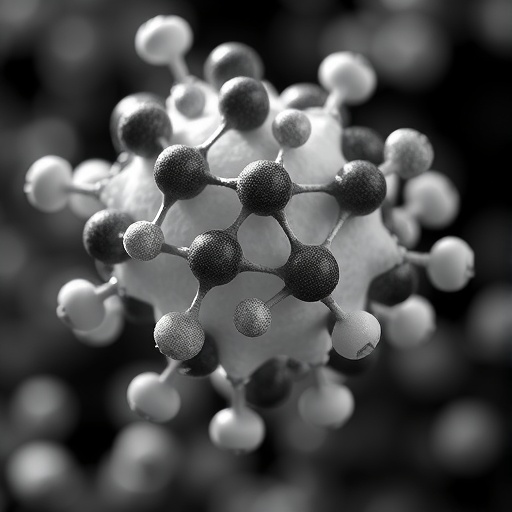In a groundbreaking study set to reshape the landscape of environmental remediation, researchers have unveiled the potential of carbon nanodots as versatile nanoadsorbents. This innovative approach promises to address one of the most pressing challenges in environmental science: the treatment of dye-polluted effluents. By investigating the fundamental properties of carbon nanodots, the study sheds light on their exceptional adsorption capabilities, which could provide a sustainable solution for water pollution caused by the textile and dye industries.
Carbon nanodots, tiny carbon-based nanoparticles usually less than 10 nanometers in diameter, have garnered significant attention in recent years due to their unique optical and chemical properties. The researchers delve into the synthesis of these nanodots, which entails a meticulous process of carbonization, often utilizing organic precursors. The versatility of synthesis methods allows for the fine-tuning of characteristics such as size, surface functional groups, and photoluminescence, making them highly effective for specific applications in dye adsorption.
The heart of the study lies in the performance evaluation of carbon nanodots as adsorbents for various dye molecules. The research highlights how parameters such as pH, temperature, and contact time influence the adsorption efficiency. The findings demonstrate that the carboxyl and hydroxyl functional groups present on the surface of carbon nanodots play a crucial role in enhancing interaction with dye molecules. This interaction facilitates efficient dye capture, showcasing the potential of carbon nanodots in transforming polluted effluents into cleaner, safer water resources.
One significant advantage of using carbon nanodots over conventional adsorbents is their biocompatibility and eco-friendliness. The study emphasizes the minimal environmental footprint of carbon nanodots, which can be synthesized from renewable resources. This characteristic is essential in promoting sustainable practices in the ever-growing field of environmental remediation.
As water scarcity continues to plague many regions worldwide, innovative solutions like carbon nanodots become increasingly vital. Effluents laden with synthetic dyes pose severe threats to aquatic ecosystems and human health. The effectiveness of carbon nanodots in removing these contaminants not only underscores their importance but also opens avenues for large-scale applications in wastewater treatment processes.
The application of carbon nanodots extends beyond dye adsorption. The researchers explore their potential in targeted drug delivery systems and bioimaging, tapping into their advantageous characteristics such as photostability and low toxicity. By leveraging these unique properties, the findings indicate that carbon nanodots could revolutionize both environmental and biomedical fields.
Furthermore, the scalability of producing carbon nanodots is examined in the study. Economical and efficient production methods will determine the practical deployment of these nanoadsorbents in real-world scenarios. The researchers highlight that advancements in production technologies could potentially lead to cost-effective solutions for industrial effluent treatment.
In summary, this comprehensive investigation into the use of carbon nanodots as nanoadsorbents marks a pivotal step in environmental science. The researchers’ findings provide clear evidence of the efficacy of carbon nanodots in remediating dye-polluted effluents, showcasing their potential for widespread adoption in environmental management practices. As global efforts intensify to confront pollution challenges, this innovative approach could well set a new standard in the filtration and purification of wastewater.
The implications of this research extend to policymakers, industry leaders, and environmental activists alike. As the demand for cleaner water sources increases, the adoption of technologies such as carbon nanodots will be crucial in shaping a sustainable future. Additionally, the research encourages further exploration into nanotechnology’s role in addressing various facets of environmental and public health.
In conclusion, the pioneering work on carbon nanodots not only addresses a significant environmental issue but also highlights the interplay between nanotechnology and sustainability. Scientists and researchers are now encouraged to explore this promising avenue further, paving the way for innovative solutions to environmental challenges. The future of dye-polluted effluent remediation may very well lie in the very small, yet powerful, carbon nanodots.
The findings coalesce to present a hopeful narrative in the fight against pollution and offer a practical, scalable solution for industries plagued by wastewater management issues. As the study garners attention, it stands as a testament to human ingenuity and our ability to harness the power of nanotechnology to foster a healthier planet.
Subject of Research: Carbon Nanodots in Dye-Polluted Effluent Remediation
Article Title: Carbon nanodots as nanoadsorbents: a novel approach for dye-polluted effluent remediation
Article References: Varshan, G.S.A., Namasivayam, S.K.R., Sivasuriyan, K.S. et al. Carbon nanodots as nanoadsorbents: a novel approach for dye-polluted effluent remediation. Environ Monit Assess 197, 1082 (2025). https://doi.org/10.1007/s10661-025-14537-x
Image Credits: AI Generated
DOI:
Keywords: Carbon nanodots, nanoadsorbents, environmental remediation, dye pollution, wastewater treatment, sustainability, nanotechnology.




